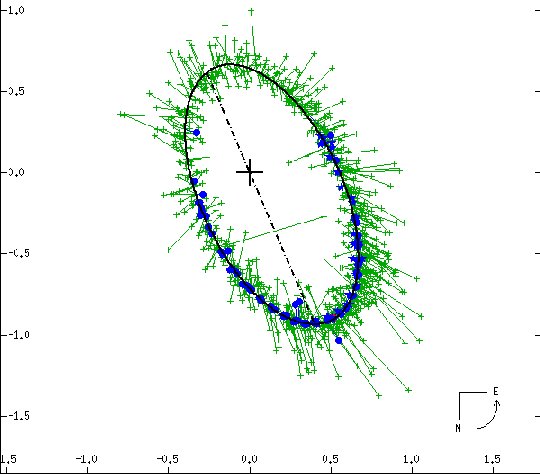
 |
Two "suns." Somewhat the fainter and less massive of the two, Eta CrB B orbits Eta-A (at the cross) every 41.63 years at an average distance of 15.4 Astronomical Units, the two in fact orbiting a common center of mass that lies nearly exactly between them. That "A" does not lie on the axis or focus of the apparent ellipse is caused by as 58 degree orbital tilt to the plane of the sky and the orbital orientation. (W. I. Hartkopf and B. D. Mason, Sixth Catalog of Orbits of Visual Binary Stars, US Naval Observatory Double Star Catalog, 2006.) |